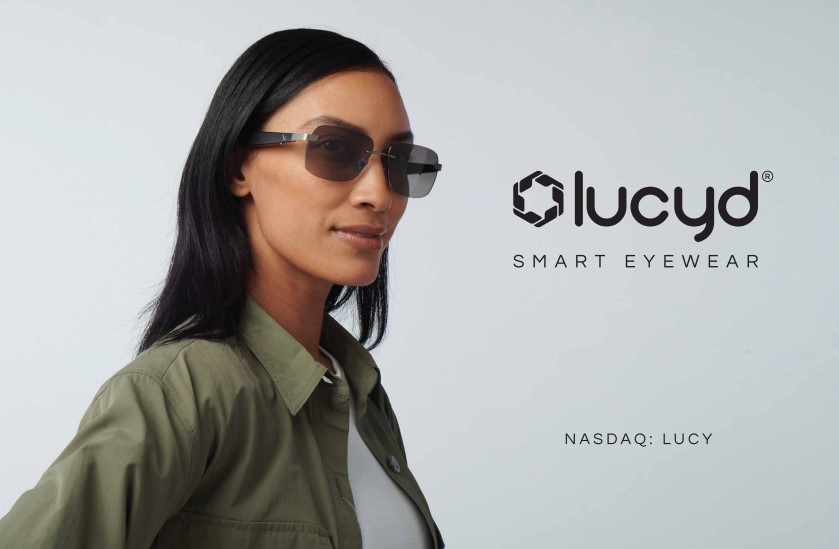Harrison Gross, CEO of smart eyewear brand Lucyd Eyewear, discusses the marketing and customer experience tactics the brand employs to stay relevant and growing in 2024.
Facebook ads are roughly half as effective today than they were five years ago, said Lucyd Eyewear CEO Harrison Gross.
Most retail marketers know this and point to Apple’s iOS 14 update — when Apple required websites and apps to ask shoppers to opt-in to tracking — as the culprit.
“That significantly reduced the effectiveness of retargeting ads and Meta ads in general,” Gross said.
While it’s hard to pin down an exact number, he estimates Lucyd’s Meta ads (on Facebook and Instagram) declined about 30-50% in effectives after the update.
This change, coupled with an increase in ad prices has forced Lucyd Eyewear and other brands to diversify their marketing spend.
From 2018-2021, roughly 60% of Lucyd Eyewear’s marketing budget went to Meta ads, 30% to Amazon ads and 10% went to other.
“Facebook ads were almost like a money machine,” Gross said. “It’s a totally different world now.”
Today, Lucyd’s spend is more evenly distributed and social media only receives a third of its marketing budget.
Balancing direct-to-consumer vs. wholesales channels
To the end, Lucyd also is working to diversify where it sells its product. After its own direct-to-consumer website, about a third of Lucyd’s sales come from Amazon and 5% from BestBuy.com. It also sells on the Walmart marketplace and Target.com.
Lucyd is working to have more physical retailers carry its product because that’s where the large majority of eyeglasses are sold today, Harrison said, estimating about 70% of total sales. Eyewear is slow to move online because consumers often prefer to have eye exams and try on glasses in person, he said.
Balancing its direct-to-consumer business online and its wholesale business is one of Lucyd Eyewear’s toughest challenges, Harrison said.
“The direct-to-consumer business has downward pricing pressure because you are competing with all of these other brands that are right next to you on Amazon or on Google shopping or wherever,” he said. “The brick-and-mortar eyewear business has upward pricing pressure because the retailers want as much margin as possible and they know consumers are willing to pay $200 to $500 for a pair of glasses.”
How Lucyd balances online discounts and retail store pricing pressure
The main arena where this plays out is around discounts. For example, if a consumer wants to purchase a pair of glasses in store, she will often search for it on her phone to price check it, Harrison said. If she sees that the same pair is offered for cheaper online, she will either ask the retailer for the same discount or leave the store to purchase it online. If a direct-to-consumer brand frequently offers deep discounts online, it may not want to carry it in store, he said.
“The struggle for us is balancing these two businesses together and having our ecommerce business not kneecap our attempts to grow the wholesale business and our attempts to get into Walmart Optical and Target Optical,” he said.

A few ways Lucyd is working to service both channels is to have exclusive products in each channel and have a minimum advertised price policy. Lucyd’s MAP policy is not to list a price more than 30% off the full price within the first year of launching the frame.
Another way to still take part in online promotional events is to offer digital coupons instead of a strikethrough discount. Again, if a shopper is doing a quick Google search of a product, she would only see the full price of the product. She would only see that a coupon or discount is offered if she clicked through to the product detail page.
It can also offer discounts to shoppers during promotional times that are on Lucyd’s email or SMS marketing list, again circumventing a widely promoted discount.
“It’s important to have some guidelines to protect your resellers and to abide them. But not doing it in a way that’s going to actually handicap your business in any way,” Gross said.
Lucyd’s Amazon strategy
In terms of its online sales, Lucyd does not have a strong preference if shoppers buy on its direct-to-consumer website or on Amazon. While it does have a higher margin on a sale on its own site, its Amazon conversion rate is often double or more, and that’s where the shoppers are.
And because of that, Lucyd often links its ads to its Amazon product page.
“When we talk about value for money where you’re sending the traffic, would you rather send a thousand people clicking on your ad to a 2% conversion page or to a half a percent conversion page or a 1% conversion page?” Gross said.
This becomes a cycle as the more external traffic Lucyd brings to its Amazon page, the more the marketplace “rewards” those pages by boosting these products in search result listing, Gross said.
One Amazon product page or dozens?
Lucyd also experiments with the best way to present its Amazon listing, such as by having all product colors together in one listing or having each product color as a separate listing. If the listings are separate, then the brand is more likely to show up in multiple spots on a search results page, plus in the “related products” section on a product detail page. But if the retailer is hoping to build reviews for a product, it is better if they are all consolidated on one page.
“Right now we’re stacking frames in the listings just because it’s less clicks for the customer to get to what they want,” Gross said.
Plus, the brand can switch tactics any time.
“Let’s say you have four SKUs in a collection kind of stacked together in one listing, one of them is outperforming getting four or five star ratings left and right. Another one’s getting two, three-star ratings. You can later break them apart if you need to,” he said.
And that’s the name of the game in online retail: adjusting if needed.
“We still are looking for that winning formula,” he said.




